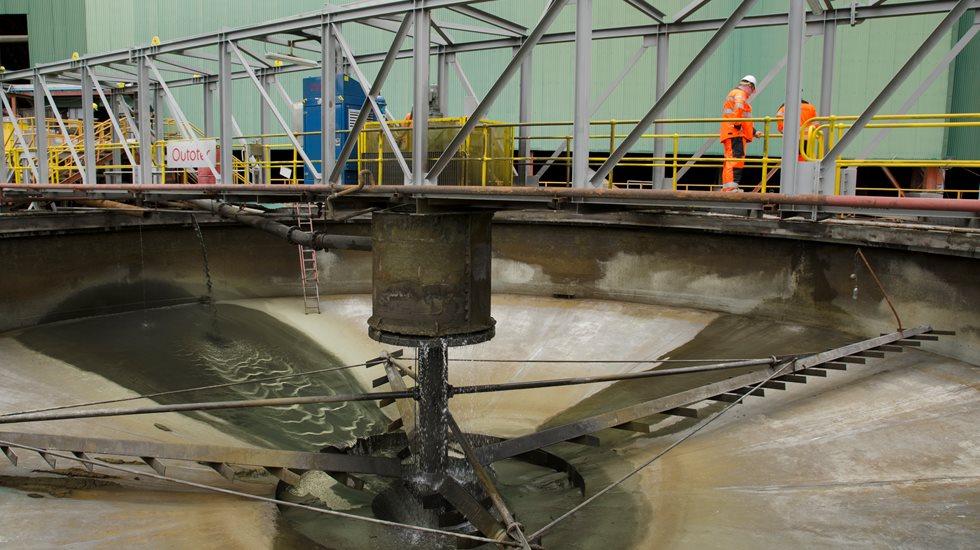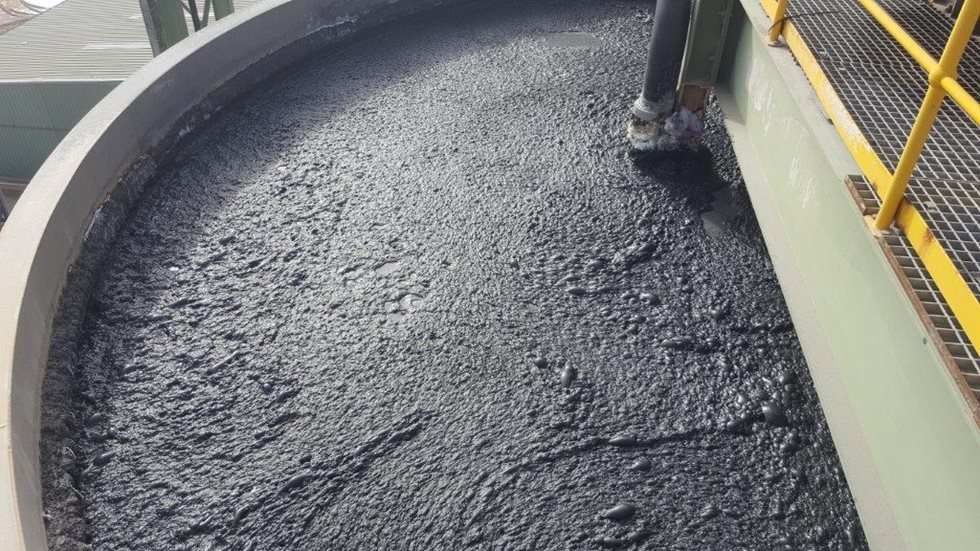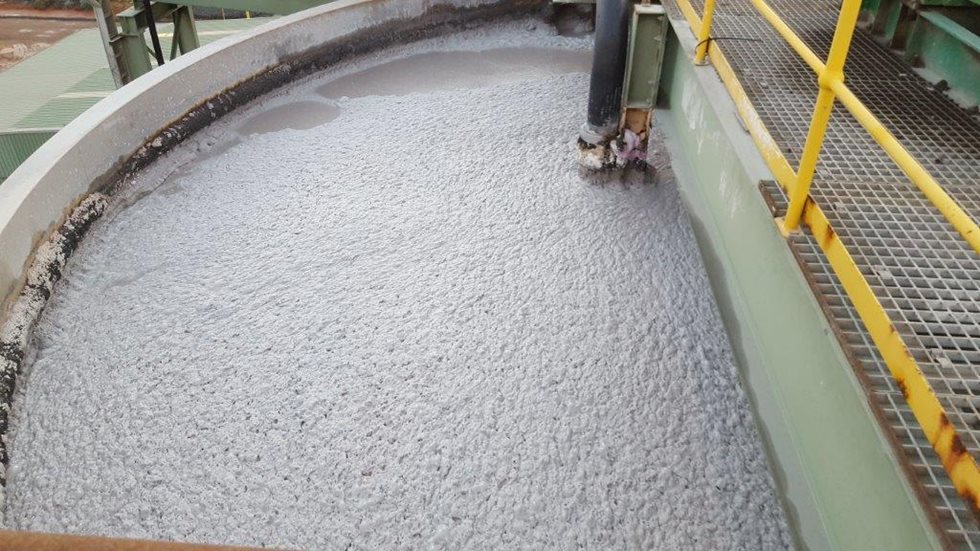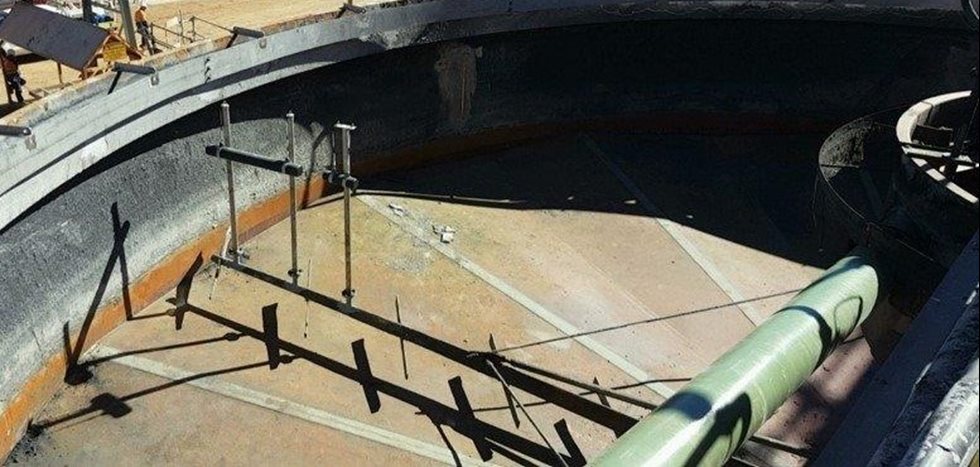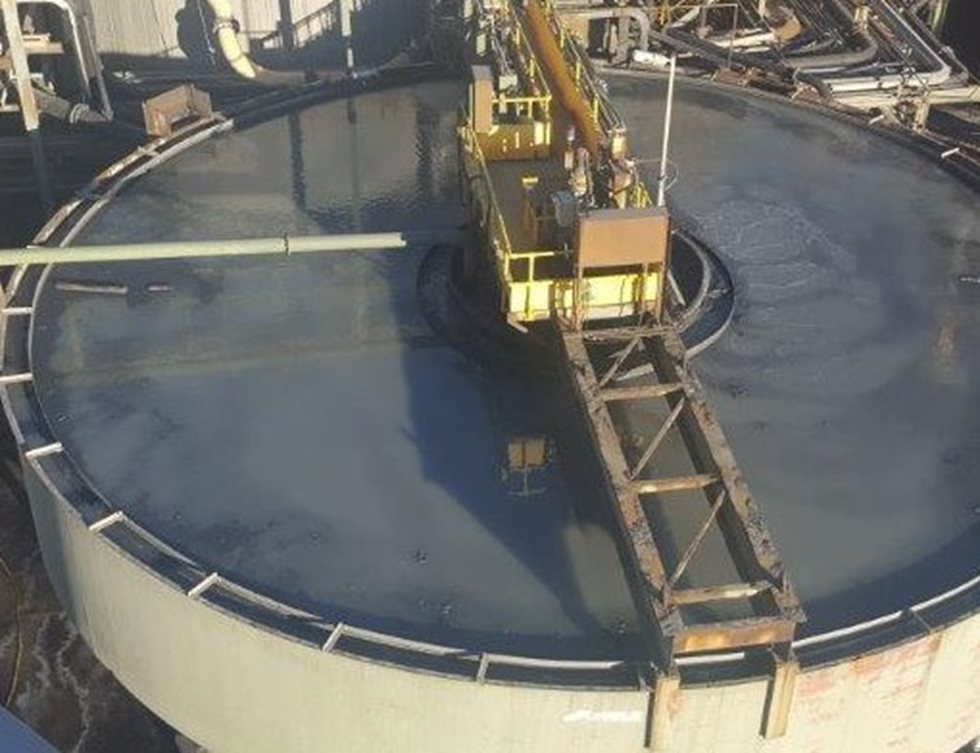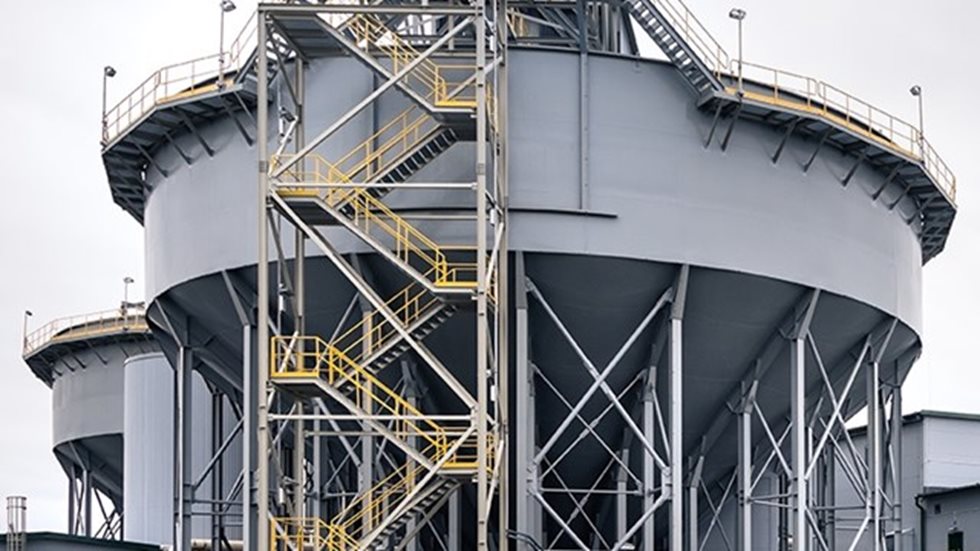Thickener performance
Due to ongoing problems with stable froth forming on the surface of its 17m pre-leach thickener, the customer decided to review options to deliver optimal thickener performance.
The thickener surface froth was problematic for the following reasons:
- The froth would cover the entire surface of the thickener, before migrating to the thickener overflow As a consequence, the froth would end up in the process water dam, where it would remain until the dam was dredged. Estimates suggest this froth was ~15% of the settled material in the dam, requiring recovery by dredging.
- The froth was shown to contain gold, with assays suggesting the gold grade of the froth to be 12-15 g/t. Although the mass flow of the froth was small, it still represented deferred.
- The froth’s presence in the overflow liquor impacted visual observations of the overflow clarity. Overflow clarity is used by operators in the decision-making process around flocculant.
- The froth would occasionally cause erratic bed level measurements, also hindering efforts for correct flocculant.
Ideally, the site’s team wanted this material to report to the thickener feedwell, then the underflow stream and through to the leach circuit. Most of the gold contained in the froth could then be recovered as intended, with the solids reporting to the tailings storage facility, as opposed to the process water dam.
It was challenging for the material to report to the thickener underflow as it was naturally hydrophobic (analysis on the material revealed a sulphur content of 5-10%). Due to high feed velocities, air entrainment in the slurry was occurring initially in the feed box and the feedwell itself.
Potential solutions
According to the site’s spokesperson, there were three- main potential solutions that their team considered, with assistance from Outotec.
1. Flocculant review - one option was to increase flocculation of the feed slurry and/or addition of different types of flocculants. This option was briefly considered, although no in-depth investigation was carried out on any other suitable flocculants. Increased flocculant addition hadn’t shown to help with the issue when trialled previously. It would also result in an ongoing increased reagent cost, so was not the preferred option.
2. New deaeration tank and feedwell - another option was the deaeration of the feed slurry via a cyclone, with redesign of the feedwell to minimise air entrainment. This option was favourably considered, as it acted to prevent the froth formation rather than treat the froth post- production. The downside to this option was that it would have had the highest capital cost, with possible relocation of some other thickener.
3. New water spray and froth ring - a further option was the installation of a spray water system to deaerate the froth, with a froth ring to hinder migration of deaerated froth to the thickener overflow Following this, it was hoped that at least 70% of the froth would interact with the residual flocculant in the thickener liquor and settle. This option was considered favourably due to its low capital cost and simplicity, and the observation that any floating material tended to settle quickly in the process water dam every time it rained.
Following consultation with Outotec, it was decided that option 3 would be implemented, with froth booms also installed on the thickener rake arms, to encourage froth movement under the water sprays.
Outotec scope
Following this review, Outotec was commissioned in February 2017 to design and supply the thickener upgrade components, as well as provide advisory services during installation. The schedule was demanding but achievable. Fabrication was completed in April to accommodate a May installation during a major shutdown at site.
Challenging design
The design of the froth ring and boom was somewhat complicated. The feed pipe sat relatively close to the thickener surface, with a flange in the feed pipe, with ~20 mm clearance from top of liquor. Ultimately, four booms had to be installed with allowances in one of the pieces of the ring to accommodate the feed pipe, without lowering the overall height of the froth ring. Also, the boom attachment to the rake arms had to allow for raising and lowering of the rakes.
